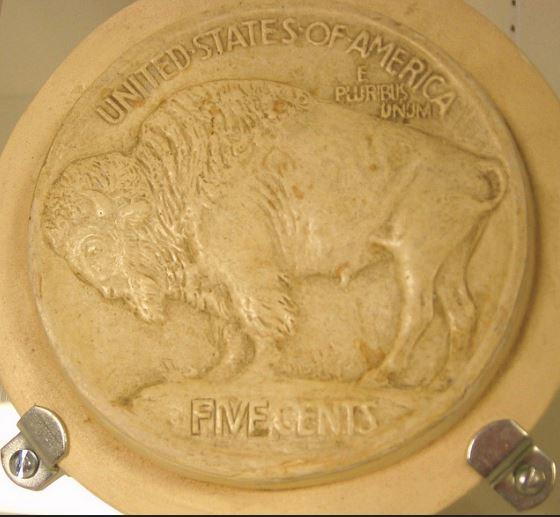James E Fraser Buffalo Nickel Plaster Maquette (Model) Reverse

This is what was written:
Plaster maquette created for the design of the “Indian Head” or Buffalo” nickel coin, created by James Earle Fraser (1876-1953) and on display at the Shaffer Art Building, Syracuse University. To produce a coin, a sculptor would create two separate medallions, and convert them to a maquette or model about the size of a tea saucer. The craftsman at the mint would use the maquette to scale down both medallions to produce a die, which will stamp the image onto the coin. This coin, originally issued by the U.S. Mint in 1913 (and produced through 1938), harkens back to James Fraser’s roots on the North American prairie. James Fraser grew up in the Dakota Territory during the late nineteenth century, where he developed an appreciation for his Native American neighbors. This provided the inspiration to use an image of a Native American and a bison in what he planned as a truly American coin. He began his study of art at the Chicago Institute of Art at the young age of 15.
Edited to add: Look at the amazing detail on Black Diamonds head and back, and the hair that extends off his front leg. Remarkable, to say the least!
Pete
Comments
Superb.
Are these on display?
I don't know. Might be worth trying to contact them.
Pete
What is happening around “FIVE?”
This is one of many versions Fraser made for the coin reverse. Others are at the "National Cowboy & Western Heritage Museum" in Oklahoma City.
(The Syracuse description is a little "odd.")
I have a spot on my wall for these